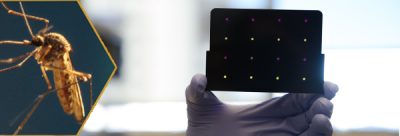Free Forum – Trump Takes Office, Millions Hit Streets with Drew Dellinger, Richard Eskow & Mark Hertsgaard
Written on January 25th, 2017I recently broke my two-year hiatus with a show of reflections on the election and the path forward. I couldn’t resist again this week, following the inauguration of Donald Trump and the millions around the US and the globe who marched yesterday. in protest. I discuss recent events and the meaning of the marches with: • Richard (RJ) Eskow (www.patreon.com/thezerohour), host of the syndicated radio show The Zero Hour, was a writer for Bernie Sanders’ presidential campaign. • Drew Dellinger, Ph.D. (drewdellinger.org), founder of Planetize the Movement, is the author of the award-winning poetry collection, Love Letter to the Milky Way, and the upcoming book, Martin Luther King—Ecological Thinker: Toward a Cosmology of Connection. • Mark Hertsgaard (markhertsgaard.com), Veteran journalist, Investigative Editor of The Nation, and the author of seven books including HOT: Living Through the Next Fifty Years on Earth and On Bended Knee: The Press and the Reagan Presidency.
Free Forum – RESPONDING TO TRUMP Eddie Kurtz, Courage Campaign – Colby Devitt, Standing Rock First NEW SHOW since 2014. Opens w 15 minute commentary.
Written on January 14th, 2017After hosting and producing this show for 17 years, I stepped away from recording new live interviews nearly two years ago, but I couldn’t resist commenting about Trump’s election and our path forward confronting his administration. The Courage Campaign is spearheading resistance in California with a mix of online and ground organizing and action. Colby Devitt shares her experience at Standing Rock and her work in the campaign to divest from banks funding the pipeline.
Disruptive #7: FISSEQ – Fluorescent In Situ Sequencing
Written on October 7th, 2016Until recently, to analyze many mRNAs simultaneously, scientists had to grind cells to a pulp, which left them unable to pinpoint those mRNAs within the cell. Developed by a team at the Wyss and Harvard Medical School, FISSEQ allows scientists to pinpoint thousands of mRNAs and other types of RNAs at once in intact cells, and stands to revolutionize clinical diagnostics and drug discovery.
Listen and subscribe to Disruptive on Soundcloud, iTunes, or Google Play.
Disruptive Episode #7 – FISSEQ – Fluorescent In Situ Sequencing
Written on October 5th, 2016DISRUPTIVE #7: FISSEQ – Fluorescent In Situ RNA Sequencing
Hello, I’m Terrence McNally and you’re listening to DISRUPTIVE the podcast from Harvard’s Wyss Institute for Biologically Inspired Engineering.
One of today’s guests, George Church, has made the point that as medicine moves from very blunt instruments – where you had to open up a chest all the way, for example, or had to use molecules that would hit almost every part of your body – now molecules can find one base pair out of six billion and change it – He says we need observational tools that can deal with that high level of resolution and comprehensiveness.
And we’re going to talk about one such tool. Fluorescent in situ RNA sequencing – F-I-S-S-E-Q – or FISSEQ.
Working copies of active genes — called messenger RNAs or mRNAs — are strategically positioned throughout living tissues, and their location often helps regulate how cells and tissues grow and develop. Until recently, to analyze many mRNAs simultaneously, scientists had to grind cells to a pulp, which left them unable to pinpoint where those mRNAs actually sat within the cell.
Now a team at the Wyss Institute and Harvard Medical School has developed a new method that allows scientists to pinpoint thousands of mRNAs and other types of RNAs at once – in intact cells.
FISSEQ could lead to earlier cancer diagnosis, help biologists better understand embryonic development, and even help map the neurons of the brain.
I’ll talk with George Church, Wyss Core Faculty member and co-founder of ReadCoor, the startup that will bring FISSEQ to market; Wyss lead senior scientist, Rich Terry, President, Co-Founder, and CTO of ReadCoor; and Shawn Marcell, Wyss Entrepreneur-in-Residence and founding Chairman/CEO of ReadCoor.
The mission of the Wyss Institute is to: Transform healthcare, industry, and the environment by emulating the way nature builds.
Our bodies — and all living systems — accomplish tasks far more sophisticated and dynamic than any entity yet designed by humans.
By emulating nature’s principles for self-organizing and self-regulating, Wyss researchers develop innovative engineering solutions for healthcare, energy, architecture, robotics, and manufacturing. [02:06]
George Church is Professor of Genetics at Harvard Medical School and Professor of Health Sciences and Technology at Harvard and MIT. He’s Director of the U.S. Department of Energy Center on Bioenergy at Harvard and MIT and director of the NIH Center for Excellence in Genomic Science at Harvard. He has co-founded a number of companies, including ReadCoor.
Church earned a bachelor’s degree from Duke University in two years and a PhD from Harvard. Honors include election to the National Academy of Sciences and the National Academy of Engineering. He has coauthored hundreds of scientific papers, more than sixty patents, and the book, “Regenesis: How Synthetic Biology Will Reinvent Nature and Ourselves.” [02:41]
To set the context for this episode, George Church offers an overview of the evolution of sequencing technology –
Church: It dates back at least to the ’60s when RNA sequencing and protein sequencing were the main ways of getting insight. In the mid-’70s, ways to do DNA sequencing based on electrophoresis came into play. Those were automated and made less radioactive, more fluorescent. In the ’80s and ’90s, it switched from slab electrophoresis, capillary electrophoresis. None of these scaled particularly well.
Continue reading “Disruptive Episode #7 — FISSEQ — Fluorescent In Situ Sequencing”
Disruptive#6: Rapid, Low-cost, Paper-based Test for Zika
Written on June 24th, 2016


